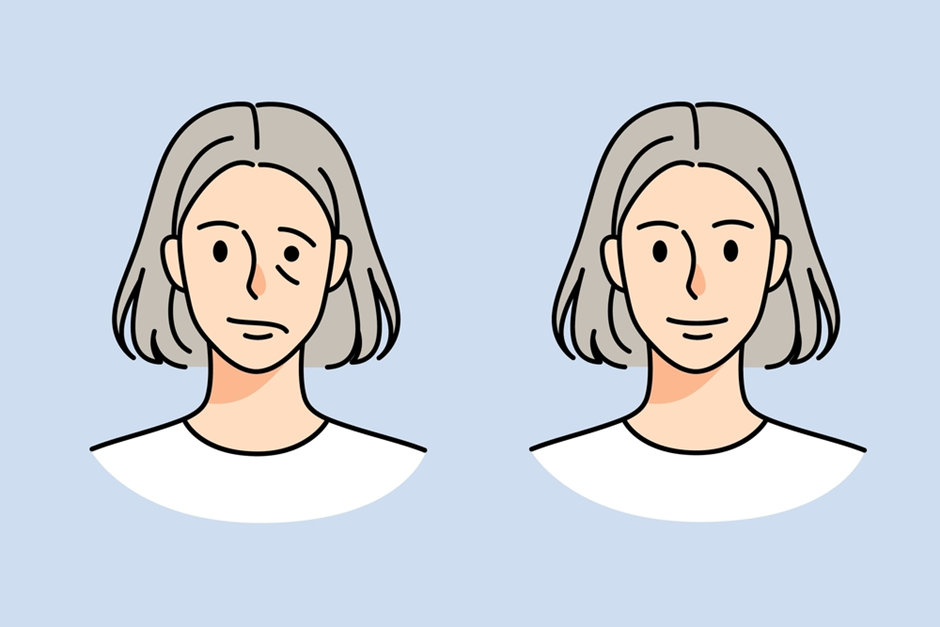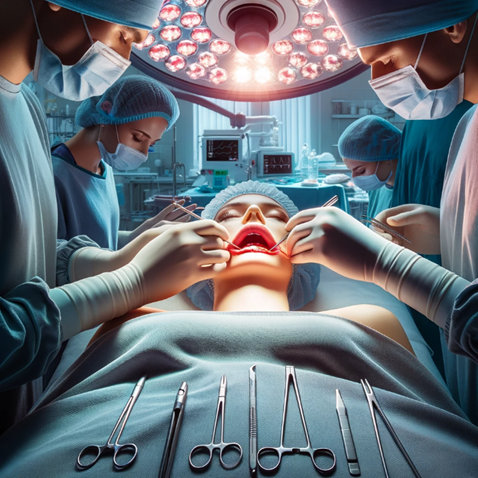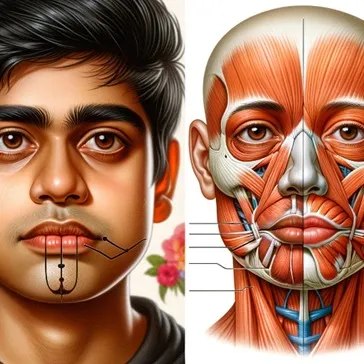Dr Leena Jain offers Plastic Surgery and Trauma Treatment in Mumbai and is considered one of the best plastic surgeons in Borivali. Many patients approach her for comprehensive advice and treatment on marginal mandibular nerve palsy condition. Dr Leena Jain is an expert Hand Reconstructive Microsurgeon and Plastic Surgeons who has helped many patients recover from marginal mandibular nerve injury.
Fortunately, plastic surgery resolves most issues related to Marginal mandibular nerve palsy, which she would like to highlight in this blog.
To begin with, let us understand
What is Mandibular Nerve Palsy?
Marginal mandibular nerve palsy happens when the nerve that controls your lower face gets hurt or damaged. This can be due to several reasons. Sometimes, it’s because of an injury, like a cut near your jawline. It can also happen after dental surgery because the nerve is close to where dentists work. In rare cases, it can be caused by a virus or a tumor pressing on the nerve.
Causes of Marginal Mandibular Nerve Palsy
A patient affected with marginal mandibular nerve palsy will experience the following
- It is hard to move the lower part of your face.
- The lower lip might droop, and you may have trouble smiling or frowning.
- Speaking clearly becomes a bit hard at times.
- Also, if there is only palsy on one side, that side of the lower lip is affected.

How Is Marginal Mandibular Nerve Palsy Diagnosed?

Diagnosis of marginal mandibular nerve palsy condition includes medical examination to
- Know more about the symptoms and medical history
- Check the face for muscle weakness, especially around the mouth
- Request the patient to make different facial expressions to see how the muscles work
- An MRI or a CT scan to look at the nerves and muscles in the face
Treatment Options
After an extensive evaluation, we can discuss the role of plastic surgery in treating Marginal mandibular nerve palsy, which includes the following options –

- Reconnecting Nerves: If the nerve is severely damaged, a plastic surgeon might perform “nerve repair.” In this surgery, they try to reconnect the damaged parts of the nerve. This helps restore movement to the affected area of the face.
- Transferring Nerves or Muscles: In some cases, surgeons can connect a working nerve or muscle from another body part to the face. This can help make up for the nerve that isn’t working properly. It’s like adding an extra helper to do the job of the damaged nerve.
- Improving Symmetry: Marginal mandibular nerve palsy can cause one side of the lower lip to droop, making the face look uneven. Plastic surgeons can do procedures to make both sides of the face look more balanced. This might not fully restore movement, but it can improve how the face looks at rest.
- Botox Injections: While not a surgical procedure, Botox (a type of muscle-relaxing injection) can sometimes be used by plastic surgeons to balance facial movements. If one side of the face works too hard compared to the side affected by the palsy, Botox can relax these muscles, making the facial movement more even.
- Supportive Procedures: In addition to these main treatments, plastic surgeons might also perform other procedures to support better facial function. This could include surgeries to adjust the lip’s position or improve the ability to close the mouth properly.
Considering the apprehensiveness of the patients, let us understand
To what extent is marginal mandibular nerve palsy curable?
Whether it can be cured entirely depends on what caused it. In many cases, if the cause is temporary, like swelling from a dental procedure, it can improve. But if it’s due to something more serious, like a deep injury, the recovery might not be 100%. Treatment, like physical therapy, can help a lot.
Plastic surgery can help patients severely affected by marginal mandibular nerve palsy. But ensure you approach an experienced and well-versed plastic surgeon who has successfully treated Marginal mandibular nerve palsy patients.
How long does it take to recover from marginal mandibular nerve palsy?
The time taken for marginal mandibular nerve recovery varies a great deal. There may be a noticeable improvement in a few weeks or months if it’s a mild case. But more serious cases can take longer, maybe even a year or more. It really depends on how severe the damage to the nerve is and what’s causing the problem. It’s important to follow the advice of healthcare professionals for the best recovery.
What are the complications associated with marginal mandibular nerve palsy?
Most of the time, this condition gets better without long-term problems. But sometimes, if the nerve damage is severe, you could have lasting trouble with facial movements. This can affect things like speaking and eating. In rare cases, if the condition is left untreated, it could lead to more serious complications.
What is the difference between marginal mandibular nerve palsy and other facial nerve palsies?
Marginal mandibular nerve palsy specifically affects the nerve that controls the lower lip and sometimes the chin area. This means it mainly impacts the ability to move the lower lip, especially when speaking or making facial expressions.
Other facial nerve palsies can affect different parts of the face. For example, Bell’s palsy affects one side of your face, not just the lower lip. So, the main difference lies in which parts of the face are affected and how they’re impacted.
Conclusion
In conclusion, Marginal mandibular nerve palsy is a challenging condition but can be managed effectively with the help of an experienced plastic surgeon who has successfully treated similar patients. Besides Borivali, Dr Leena Jain is a practising plastic surgeon in Bandra at the Lilavati Hospital.
The techniques used, ranging from nerve repair to muscle transfers, are tailored to each individual’s needs, aiming to restore as much function and symmetry to the face as possible. It’s essential for anyone experiencing symptoms to seek medical advice, as early intervention can make a significant difference.
Remember, treatment aims to improve physical appearance and enhance overall quality of life and confidence. With the right care and treatment, many individuals with Marginal mandibular nerve palsy can expect positive outcomes.
Reference: https://en.wikipedia.org/wiki/Marginal_mandibular_branch_of_the_facial_nerve

